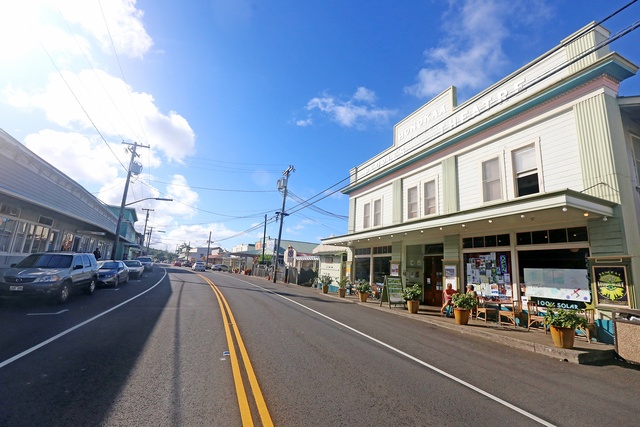HILO — A project commemorating the history of Honokaa will hopefully begin to bring cultural tourism to the Big Island next year.
The Historic Honokaa Town Project, which aims to preserve and commemorate the unique plantation buildings of Honokaa, is expected to place a total of 14 Honokaa entries on the Hawaii Register of Historic Places by early 2018, with seven of those properties listed on the National Register of Historic Places as well, said project coordinator Gerald De Mello.
Currently, 10 Honokaa entries are listed on the state register, with five of those — the Ferriera Building, Hotel Honokaa Club, the Honokaa People’s Theater, the Seishiro Hasegawa Ltd. Store Building and the Sakata Building — on the national register. Properties on the national register are eligible for grants and tax breaks for repairs and maintenance.
“We hope it will nurture and enhance people’s civic pride,” De Mello said of the project. “There’s not a lot of beaches up there, on the Hamakua coast, but what that coast has is history.”
Ross Stephenson, fellow project coordinator, said the project will not only help to maintain the buildings, but hopefully mark the beginning of a cultural tourism industry on the Big Island.
“The thing about Hawaii tourism is that it’s focused on physical things — beaches and temperatures and things like that,” Stephenson said.
However, tourism focused on places’ unique cultures is a growing trend, which Stephenson said can be brought to Hawaii.
Stephenson said the project will erect plaques throughout the town in 2018, which will explain the historical context for the buildings and parts of the town. Stephenson has created a brochure describing over 30 historical locations in Honokaa to be used as a walking tour of the town.
If the project proves successful, Stephenson said it can serve as a model for similar cultural tourism projects throughout the state. Stephenson envisions the scope of the Honokaa project expanding in the future to highlight historical locations across the entire Hamakua coast.
Before that can happen, though, more locations need to be registered, which can be a time consuming process. Each submission to the registers was backed up by “months and months and months” of research, De Mello said, with additional work for occasional revisions.
The National Register submission form for the Hotel Honokaa Club, for example, features 90 pages of photographs and meticulous descriptions of the building’s architecture and history, while a submission for multiple properties includes over 100 pages of a rigorously sourced history of the entire town.
Stephenson said working with the community to restore its structures has been “very satisfying” and a testament to the civic pride of its residents.
De Mello said Honokaa is unique for its “continguousness” — that is, it has retained its plantation-style architectural profile for decades.
“If you were to go there in 1940, you would see what you see now,” De Mello said. “If you were to go there in 1970, you would see what you see now. It’s been encapsulated in time.”
Email Michael Brestovansky at mbrestovansky@hawaiitribune-herald.com



